Travelling in Europe: getting off the beaten track
Pierre
12 Oct 2022
While some countries are well known to travelers for a trip to Europe: get off the beaten track, some regions are often overlooked in favor of tourist spots we already know by heart from photos.
Travelling off the beaten track means putting aside the must-sees for more authentic places. Living in immersion, exploring, cutting yourself off from the world, changing your habits, that’s what traveling off the beaten track is all about. Avoiding mass tourism and preferring little-explored destinations means traveling differently. These 6 places for an off-the-beaten-track trip in Europe are sure to please.
6 travel destinations in Europe, off the beaten track for a different kind of travel…
Montenegro is a Balkan country of high mountains, medieval villages and small beaches on the Adriatic coast. It was born in 2006 following its separation from Serbia. In the center of Montenegro lies the Bay of Kotor, the only fjord in the Mediterranean that stretches 28 kilometers inland.

Arriving from the seaside town of Budva, Tivat is the 1st village on the Bay of Kotor that you can visit, a quiet, restful place. A visit to the town of Kotor is a must. Take a stroll through the old-style alleyways and enjoy a cup of coffee. The city can be visited in about 2 hours. For a view of the whole city, head for the St Jean fortress.
Then on to Perast, 12 kilometers from Kotor. A beautiful little village of charming stone houses. Perast’s charm lies in its two offshore islets, each with its own church. To enjoy the view, you can dine or have a coffee in one of the restaurants with their waterside terraces.
If you love the charm of olive trees, the Lustica peninsula, south of the Bay of Kotor, is the region of Montenegro with the most olive trees. Here you can meet the families who produce organic olive oil and visit the farms.
To get to the Bay of Kotor, remember that it’s only 90 kilometers from Dubrovnik in Croatia, so you can easily get there for a day trip by car or bus.
Head for the south of Spain for 2 days of cultural visits in the romantic little town of Ronda. Perched on the Serrania hills, it was a refuge for Andalusian bandits in the 18th century, and is home to one of the most beautiful white villages: La Ciudad. The Ciudad de Ronda or “old town” will be the main focus of your visit, with most of the monuments and museums to be seen in this small white village.
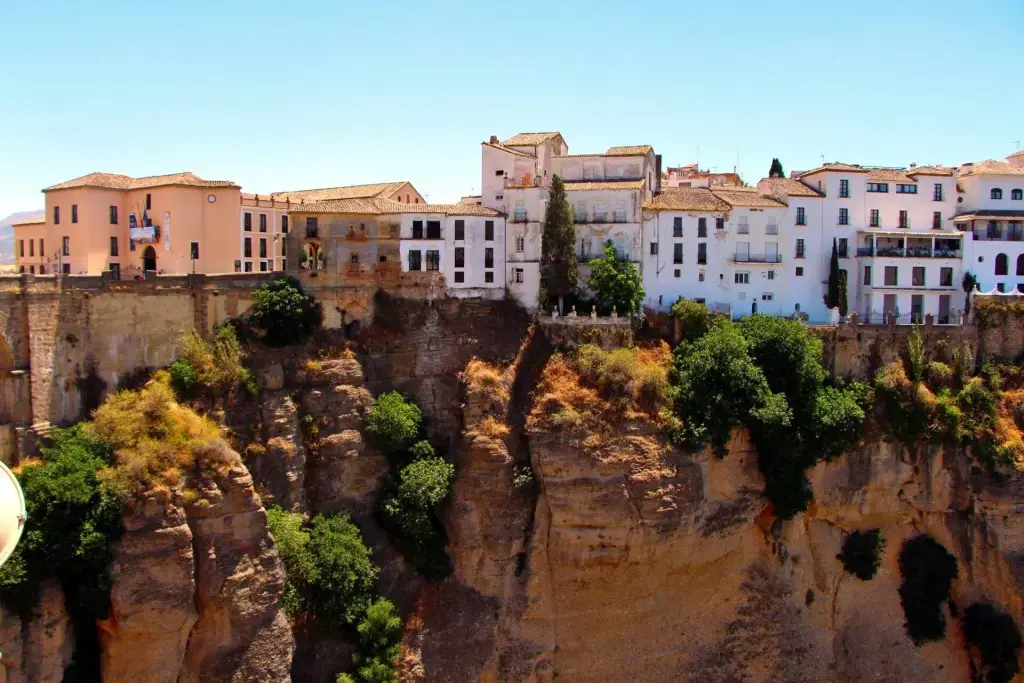
Don’t miss the impressive Palace of the King of the Moors, with its interesting history. It is divided into 3 zones: the palace itself, the hanging gardens of foresters and the secret mine. The whole complex covers 3700 m2 and played an important role in protecting the town in the 14th century. Continue your tour of the Ciudad with a relaxing visit to the Arab baths, the palace of the Marquis of Salvatierra or the Lara Museum.
If you’re not afraid of heights, head for the Pont Neuf de Ronda, which spans the 160-metre-deep Tajo gorge. It links the modern district (Mercadillo) with the old town (La Ciudad). It has a strong history, as it collapsed 6 years after its construction, killing 50 people. During the Civil War, opponents of Franco’s regime were reportedly thrown alive from the bridge. On the plus side, the bridge is beautiful and has a museum inside for you to visit.
We then head for one of Spain’s oldest bullrings, the Ronda bullring. They were built by the architect Martín de Aldehuela, who also built the Pont Neuf, and can accommodate 5,000 spectators. You can also visit the bullring and the bullfighting museum on the same site.
Ronda is only 1 hour from the coast, so if you’re on vacation in Málaga, you can easily get there for a 2-day excursion.
Affordable travel in Europe: The Netherlands
Located in the heart of the country, Utrecht is one of Holland’s oldest cities. It’s not a city that travelers are very familiar with, yet it’s a city with a lot of charm. You’ll find a bit of Amsterdam here, with its many canals but without the crowds of tourists. Beyond its charm, Utrecht is interesting for its history. It was one of the country’s most prosperous and powerful cities in the Middle Ages. Canals were dug to facilitate development and the transport of goods. Today, restaurants and bars are still supplied in this way.
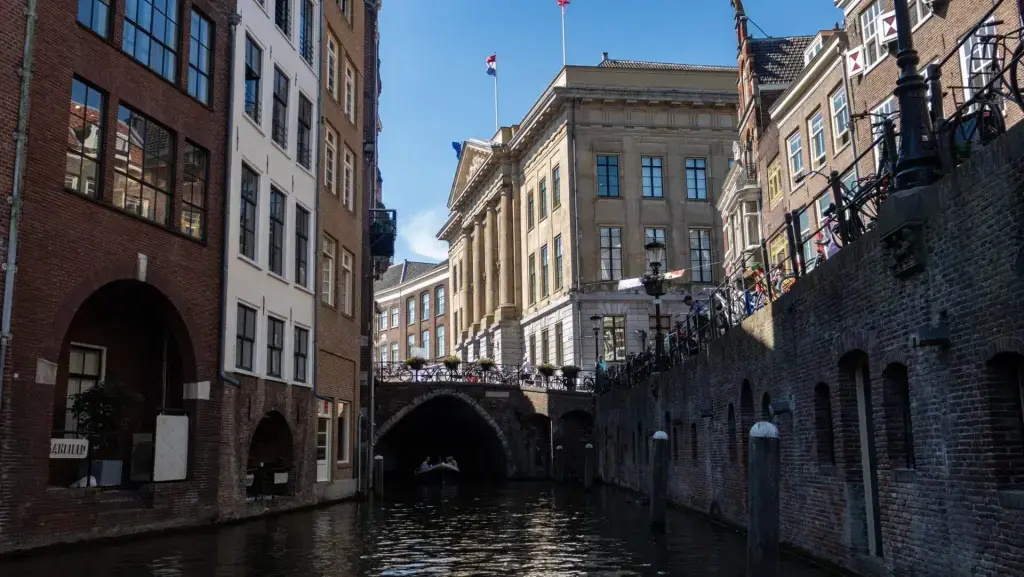
The advantage of Utrecht is that you have 2 ways of visiting the city: on land or on water. To visit Utrecht by water, hop into a canoe or kayak and take a trip along the old canal, Oudegracht, which dates back to the 11th century. It will take you through the city center on a 1h30 to 2h tour with photo stops. You can also take a cruise on the city’s two other canals, Nieuwegracht and Stadsbuitengracht, which border the historic center.
Back on earth, we head for the Cathedral Tower, the city’s most emblematic landmark. It’s currently under construction until 2024, but you can still visit the interior and climb to the top for a panoramic view of Utrecht. 112 metres higher, Utrecht’s Domtower is the tallest bell tower in the Netherlands, no less! After 465 steps (or the elevator for the less adventurous), you’ll reach the top and your effort will be rewarded with a spectacular view. In the distance, you can even see Amsterdam and Rotterdam – yes, yes! A few steps from the cathedral, don’t miss the University of Utrecht building, built in the late 19th century in the neo-Renaissance style.
Just 45 minutes from Amsterdam, you can spend 2 days in Utrecht and enjoy a night on the town. While you’re here, you must try the local speciality, Appelbol. It’s an apple bursting with caramel, with raisins trapped inside, in the middle of a crisp, flaky pastry. Delicious with coffee or chocolate. To taste these little specialties, head for Vismarkt, a small market in the city center.
Olomouc is located in northern Moravia in the Czech Republic. The town boasts impressive Renaissance-style architectural charm and is a UNESCO World Heritage Site, no less! It boasts a rich cultural heritage, with 28 churches and magnificent fountains on every street corner.
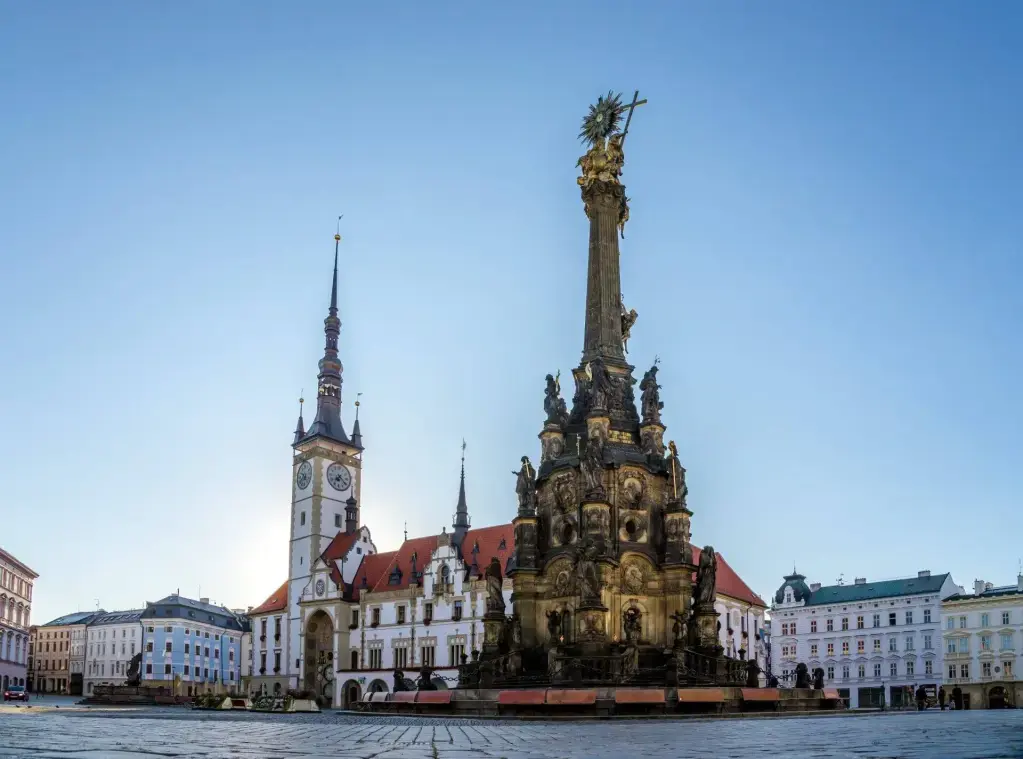
Make your way to the city’s main square, Horni Square or “Horni Naměsti”, home to Olomouc’s magnificent Renaissance-style Town Hall. The largest palace on the square is the Salm Palace, a noble residence with 5 wings. It stands right in front of the Petráš Palace, a Gothic building that was later transformed into a Baroque palace. The last of this trio of magnificent palaces on the square is the Edelmann Palace, an old mansion transformed in Baroque style.
We continue on our way to Dolni Square, where Mozart and his parents stayed in one of the surrounding houses. A beautiful baroque fountain stands right in the middle of this tranquil square. There are many small cafés and restaurants around the square where you can enjoy a slice of breaded cheese and a burek, a kind of cheese turnover from the Balkans.
After a stroll through the squares, head for Olomouc’s Old Town. You’ll pass a number of beautiful Baroque churches (again…), notably that of Saint-Michel. You can also discover the neo-Baroque chapel of St. John Sarkander or Svobody Boulevard as you continue along the narrow streets. Olomouc also boasts some incredible Art Nouveau buildings, such as Villa Primavesi, behind St. Michael’s Church.
Located around two hours from Prague, you can spend a few days here to enjoy the peace and quiet. It’s a beautiful city that deserves to be on your Czech Republic itinerary.
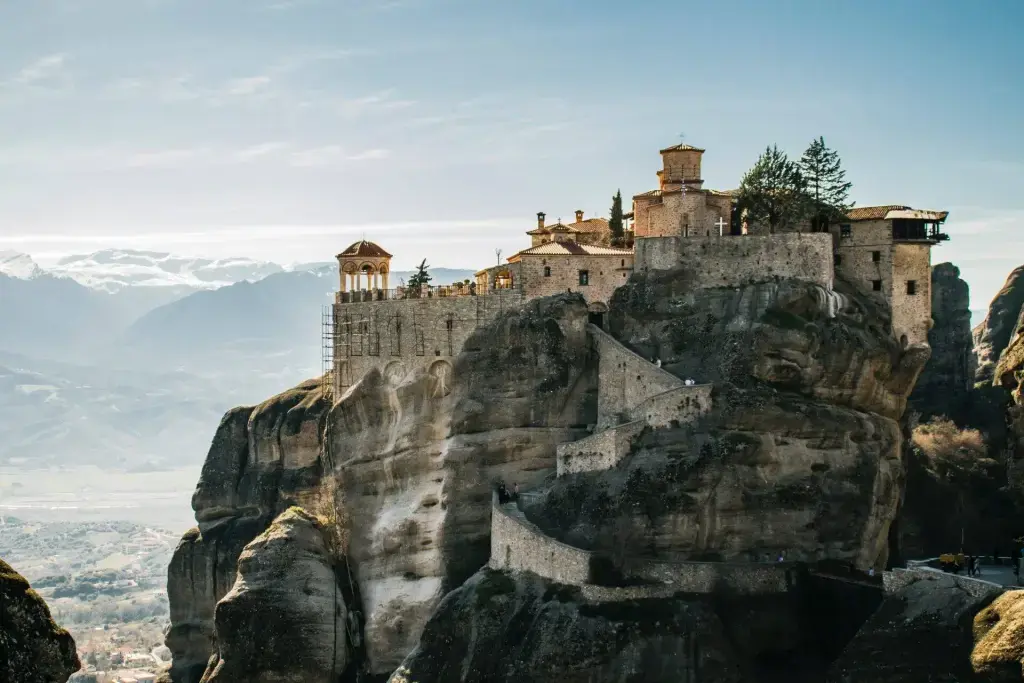
A must for any trip to Europe: Greece.
The Meteors are a geological formation in northern Greece, home to numerous Orthodox Christian monasteries on the cliffside. It’s a must-see in Greece, yet it’s a Unesco World Heritage Site, no less! For the record, the meteors aren’t “just rocks”, they’re actually rocky sediments that the river flowing into the Thessaly Sea left behind millions of years ago.
Over the years, the first hermits began to occupy caves in these rocky peaks. From the 14th century onwards, the first buildings were erected, notably the first monastery called Megalo Meteoro in 1382. This was followed by the construction of 22 monasteries. Unfortunately, most have fallen into disrepair, with only 6 left standing, and staircases have been built for easier access. Today, they are maintained by the monks and nuns who live in them.
You can visit these monasteries, the largest and best-known of which, the Megalo Meteoro monastery, is grandiose and magnificent, and is sure to be the first you’ll want to visit. If you like authenticity, don’t miss the one at Agios Nikolaos either, where you’ll see a recreation of a cell and the living rooms, so you can imagine what monastic life was like in those days. 4 other monasteries are also still active and accessible to tourists.
A 2-day excursion to Meteora from Athens will take you 5 hours by car. If you have the time, you can also take the time to hike around the grandiose site, but be careful, it’s a bit of a climb (so be brave)!
Travel to Europe in Georgia
Batoumi is a coastal town in south-west Georgia, on the shores of the Black Sea. Batoumi is sometimes referred to as the “Las Vegas of Georgia”, as there are so many casinos and skyscrapers in the city. Batoumi owes its fame to its unique architecture, combining futuristic and ancient buildings.
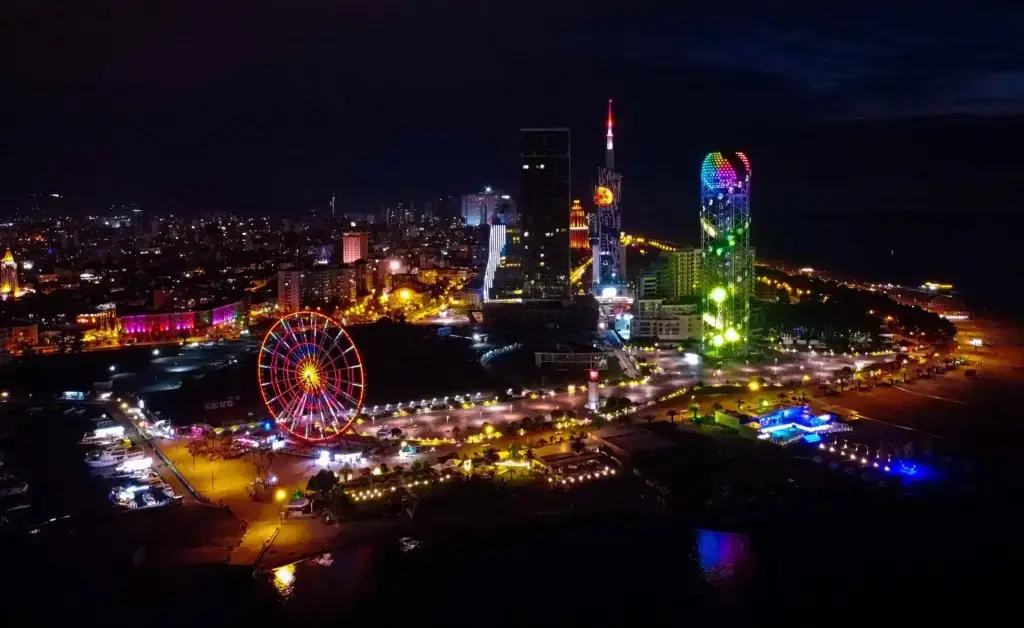
To discover the city, take the Argo cable car to get a bird’s eye view of the city. Once you reach the top of Anuria mountain, 250 meters above sea level, you’ll discover a panoramic view of the city, the Black Sea and the surrounding mountains. The Argo complex also includes small retail outlets and bars and restaurants for a snack on the rooftop terraces.
We bring our feet back down to earth to discover the city’s architecture. This city blends two quite different architectural styles, a mixture of Soviet-era buildings and modernity. During your visit, don’t miss Notre-Dame Cathedral, whose statues of Andre and Simone, the first ambassadors of Christianity to Georgia, are displayed in front. If you love museums, you’ll love the Museum of Adjarian Archaeology. Then it’s on to the pebble beaches of the Black Sea to enjoy the sea air and relax.
One of the best places to sample Georgian cuisine is the Gamarjoba restaurant, where you can sample a wide range of vegetarian and meat specialties. You absolutely must try khinkali, huge ravioli filled with spicy meat or vegetables, one of the typical dishes of Georgian cuisine.
Batumi can be reached by train in 5 hours from Tbilisi, the capital of Georgia.
So if you’re fed up with overcrowded destinations, Europe is full of hidden gems off the beaten track to discover. So pack your bags for your next trip to one of Europe’s hidden treasures, and don’t forget to take out insurance!
Do you have any questions?
Our teams are here to advise you!

4,3/5 on Trustpilot

Certified partners

Human & committed service

Customized offer

Optimal coverage